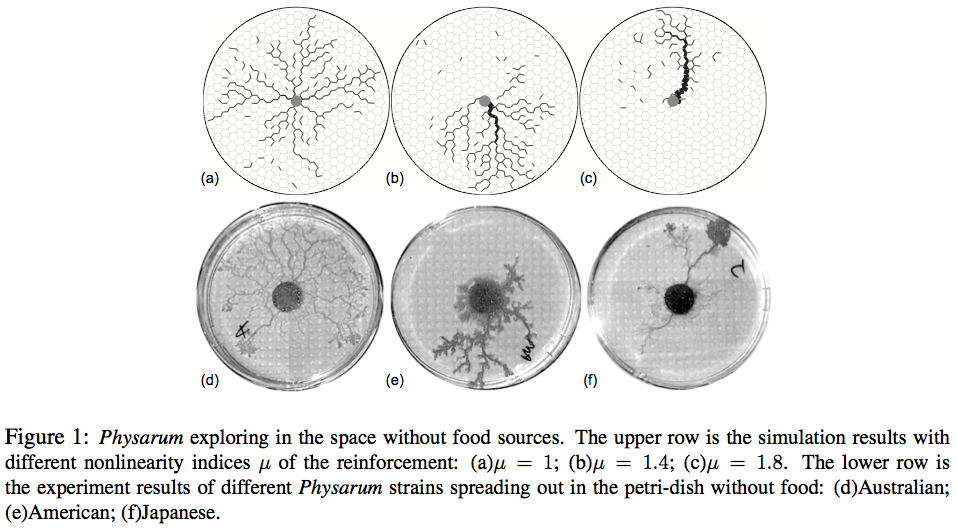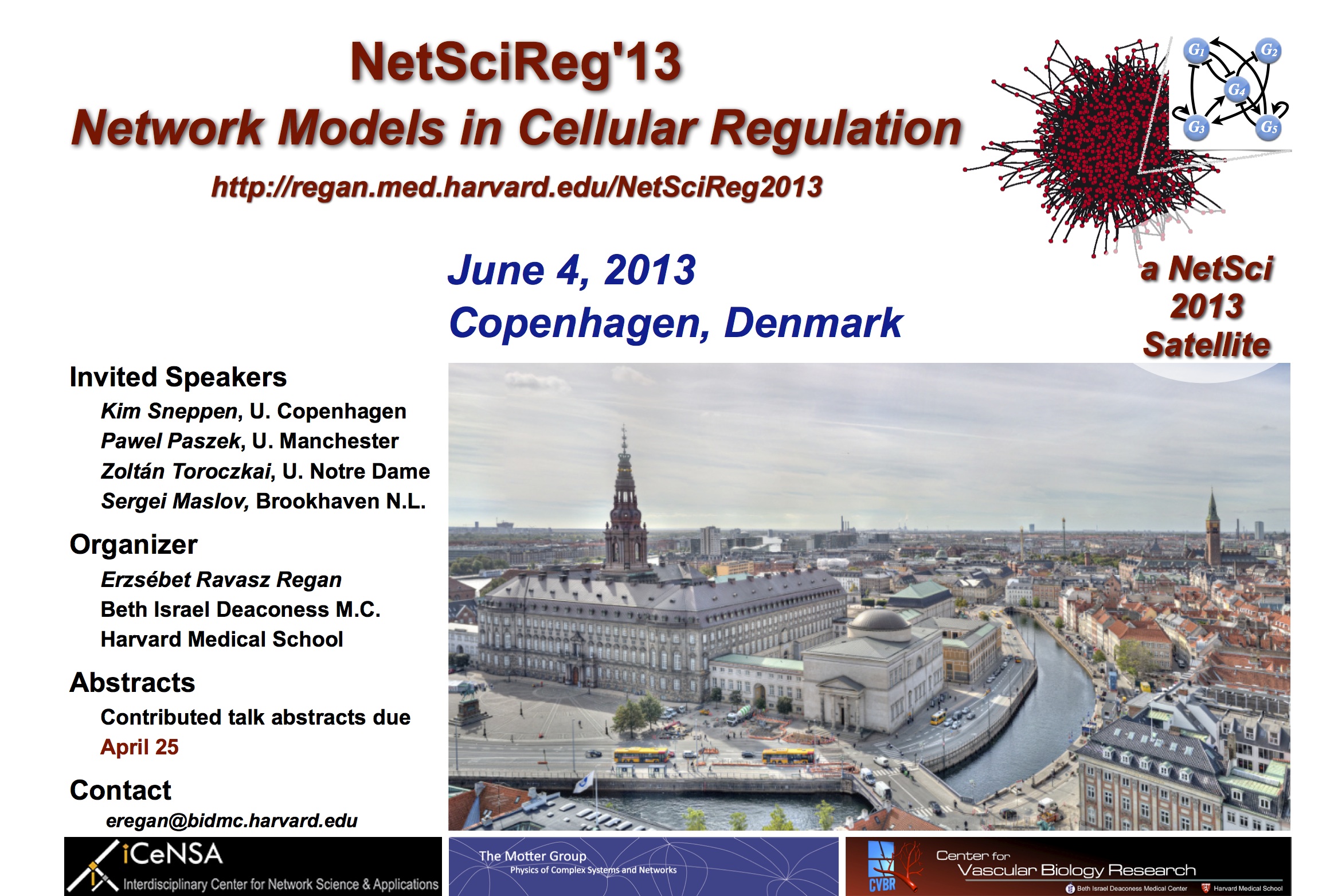NetSciReg'13 - Network Models in Cellular Regulation
June 4, 2013 - Copenhagen
| Synopsis |
| Program |
| NetSciReg'13 Flyer |
| Important Dates |
| Registration |
| Call for Contributed Talks |
| Logistics |
| NetSci 2013 |
| Sponsors |
|
Time: 11:50 AM - 12:15 PM
Type: Contributed talk
Affiliation: Uppsala University, Sweden
Abstract Recent research showed that single cellular amoeba-like slime mould and ant colonies can build rather complicated networks to achieve certain systematic goals [1, 2]. The underlying mechanisms of the network formation process and linking the structures to functions of the networks are appealing subjects to study. For example, how do design requirements about the speed and accuracy with which information is transferred through a network determine its form? We show that different strains of the slime mould Physarum polycephalum form different net- work structures, ranging from a diffuse network of thin links to a tree-like branching structure. Using a simple novel current-reinforced random walk model, we explain these different struc- tures in terms of two model factors: the strength and degree of nonlinearity in the reinforcement of the edges (see figure 1). These factors are further shown to tune the speed and accuracy with which the network can detect resource gradients. We use a battery of experimental tests to show Physarum strains with diffuse networks make more accurate but slower decisions and those with thick trunk branches make faster less accurate decisions. Intermediate structures can also be found which are relatively fast and accurate. The current reinforced random walk provides a tunable algorithm to reproduce the dynamic formation processes of different networks and the decision-making processes by the slime moulds. Our model uses the analogy between random walk and electrical networks proposed by Kingman [3]. Treating the network as an electrical circuit, we further reinforce edges that have large current or flow across them (such as a large net number of particles moving along a specified edge). This reinforcement increases the conductivity of the edge, encouraging greater flow along in future through a positive feedback [4]. According to the consistency of the model and experimental results, we suggest that re- inforcement based on the net flow went through the edges, together with the nonlinearity of the reinforcement, is a general mechanism for the morphology of biological networks. It has potential application in systems such as blood vessels and neural networks, where transport of materials or information is involved.
|
SPONSORS: |




